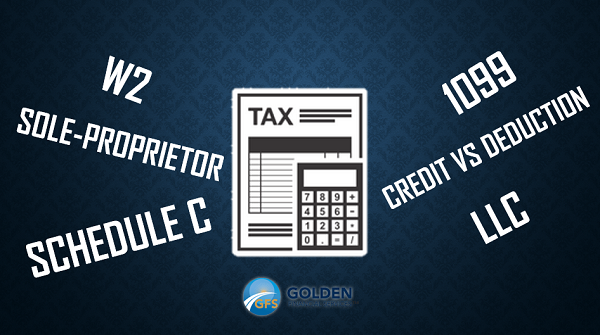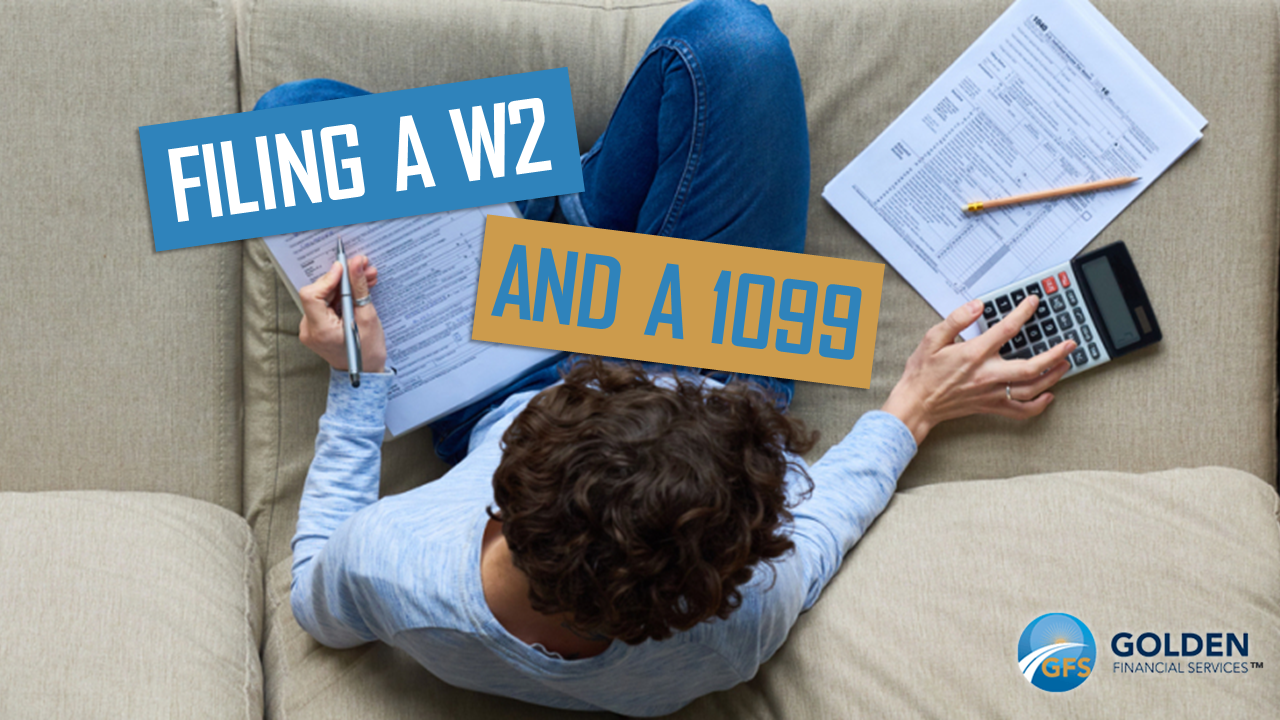How do you file taxes?
The United States in 2020: Everyone is quarantined to their houses. Schools and businesses are shut down. Even the streets of New York City are empty because people are afraid to leave their houses. College and professional sports across the country have been canceled. Bars are closed. Restaurants are closed. The hottest products in the stores consist of toilet paper, paper towels and cleaning supplies. This is not the country that we all know and love. But one thing hasn’t changed … People still need to file a tax return.
This is a “quick guide” for “filing taxes” which explains:
- How to file taxes if you do freelance work (for freelancers)
- How much you can earn before having to file taxes
- How to file your taxes online (on your own and for free)
- How to file a tax extension and what you need to know about extending payment of taxes “due to Coronavirus.”
How to File W2 and 1099 Taxes for Freelancers
Alternative employment, also known as freelance work, is rapidly replacing the typical 9-to-5, Monday through Friday format for making a living. With so many employment lifers leaving their desks and heading home to continue work, freelance taxes will soon also become more of a norm than a specialty.
If you are a first-year freelancer and have spent the majority of your life filing taxes on a W2, you will be accustomed to having the money for your taxes already taken out of every paycheck, and therefore are likely expecting a tax return, rather than a tax payment. If you left your job at the office mid-year, you would also have to file both a W2 and 1099 at the same time. There are both subtle and significant differences in these types of filings, so we will go over them below as the deadline approaches.
How much money can I make on the side before having to file taxes?
Amounts can vary from state to state, but it is a hard number with the Federal Government: $400. At $401, you are responsible to report these earnings to the Internal Revenue Service (IRS).
The best way to make these payments is with a Schedule C form because many of your freelance clients won’t send you a 1099 form. This is because they are not required to unless they have given you more than $20,000 or have paid you more than 200 times.
With many freelancers now receiving payments through PayPal or other digital transfer services, a Schedule C form is a catch-all for any payments, on any platform. When filing with a Schedule C, you will also be responsible for the standard 15.3% freelancer tax. When working on a W2 contract, the percentage of payment your employer needs to make never appears on your pay stub. Still, half of 15% that you are responsible for that covers Social Security, and Medicare is already removed. As a freelancer, the IRS considers you to be both the employer and the employee, so you are responsible for the full 15% in this case.
Do I have to file taxes for freelance every quarter?
Depending on how much you earn via freelance work, you may have to pay quarterly estimated taxes AND file your yearly return by April 15. If you expect to have to pay more than $1,000 in taxes at the end of your income year, you will be required to make estimated quarterly payments, with their own due dates to the IRS. Here are the upcoming quarterly dates for the 2019 tax year (paid in 2020):
Q1: April 15, 2020
Q2: June 17, 2020
Q3: September 16, 2020
Q4: January 15, 2021
The Schedule SE tax form walks you through the calculation of self-employment tax. Take that final dollar figure over to your standard Form 1040. You might also be able to deduct the employer-equivalent portion (50%) of your self-employment tax on your 1040.

Do freelancers get taxed more?
Freelancers are responsible for more in taxes because they are required to pay both the employer and employee tax percentages, which total 15.3% annually. This is because the IRS sees a freelancer as both entities, which is likely because of paperwork flow and making things easier for them to track. They also don’t want to miss out on the extra funds just because someone is self-sufficient enough to not need an employer. Aside from the Self-Employment tax, all over tax rates are the same as a W2. For instance, freelancers pay the same in Social Security and Medicare, it just needs to be paid manually rather than removed from a paycheck every two weeks.
The breaks for freelancers come in the form of available tax credits, and especially tax deductions. Some common deductions available:
- A home office – a room dedicated solely for work can be written off based on its size
- Gas mileage – for client meetings some travel may be required and can be written off as an estimate
- Supplies – sticky notes, computer equipment, printer ink, and other electronics can qualify
If you are planning on filing both a W2 and 1099 this year, here is some excellent advice from Forbes: “If that’s your situation, you may be able to avoid paying estimated taxes simply by increasing your withholding at your W-2 job(s). For instance, if you normally claim 2 or 1 on your W-4, then reduce it to 1 or 0 to have more taxes taken out of your paycheck, making the quarterly payments unnecessary.”
How much money should I set aside for taxes as a freelancer?
Some of this depends on your ability to use tax credits and tax deductions to lower the amount of income with which you are responsible for, but Dave Ramsey also offers this advice in his blog: “Dave recommends you save as you go by setting aside around 25–30% of every freelance check you receive in a separate savings account to cover the taxes. Why so much? Because you have to pay both income tax and the self-employment tax. What is the self-employment tax? The self-employment tax is 15.3% and solely exists to cover your Social Security and Medicare taxes.”
Dave continues: “At a normal full-time job, your Social Security and Medicare taxes are taken out of your paychecks automatically—and your employer covers half of those taxes. But as a freelancer, you’re considered both an employee and an employer. That’s why the IRS wants you to cover the full 15.3%.”
How to File Taxes Online (and for FREE)
More than 56 million Americans have used the IRS’s – Free File– method.
DIRECTIONS TO FILE:
- Start filing your taxes by going to THE FREE FILE APPLICATION AT IRS.GOV
- Find Tax Breaks. The tax software’s question-and-answer format helps eligible taxpayers find tax breaks. …
- Free for All. Taxpayers with income of $64,000 or less can use brand-name software. …
- Easy Online Extensions.
H&R Block’s Free Online Tax Filing is another free way to file your taxes on your own. H&R Block’s software allows for not only Federal and state returns, but also some itemized deductions.
Source: U.S. News, How To File Taxes For Free, 03/19/2020
How to File a Tax Extension?
To file a tax extension, it’s pretty easy, just e-file or file IRS Form 4868 by April 15, 2020, and you will be granted the extension. Just remember an extension gives you an extra six months to file your taxes, but you still need to pay at least something by the April deadline. Estimate the amount that you owe and pay that amount with the extension request to avoid penalties and interest.
Coronavirus Gives Taxpayers and Extra 90 Days to Pay Taxes (2020)
The IRS is giving taxpayers an additional 90 days to pay their federal tax bill without penalty or interest. So, if you owe taxes this year, your payment is due by July 15, 2020.
You do still need to file an extension if you want to take advantage of this offer.
If you found our blog looking for financial advice or assistance with credit card debt relief or debt consolidation, call Golden Financial Services today at (866)-376-9846 or info@goldenfs.org. You can check out the rest of our blog here, and do your research on our services here. Let’s talk soon!


